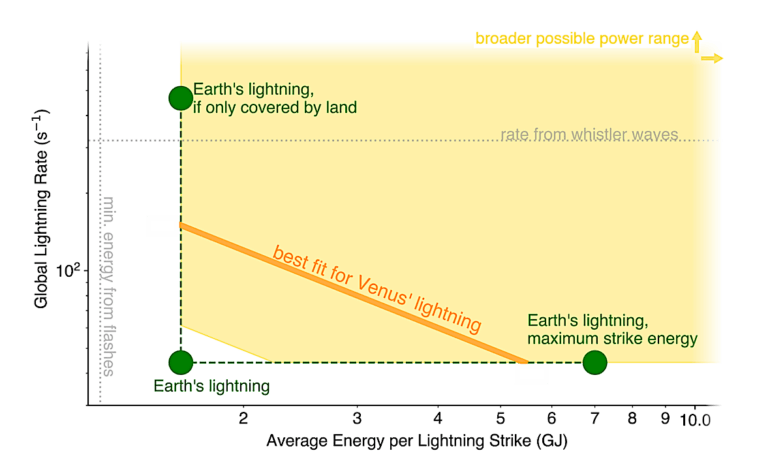Study Reveals Lightning on Venus Requires Unprecedented Power

Recent research has provided insights into the potential presence of lightning on Venus, suggesting that it may require significantly more energy than previously thought. In a study accepted for publication in the Planetary Science Journal, researchers including Tereza Constantinou, Oliver Shorttle, and Paul B. Rimmer employed a novel indirect approach. Instead of searching for visual or radio signatures of lightning, they focused on the chemical by-products produced by lightning in the planet’s atmosphere.
The study highlights that nitric oxide (NO) serves as a crucial tracer for lightning activity, as it is exclusively generated by lightning in Venus’s lower atmosphere. By utilizing photochemical-kinetic modeling, the researchers calculated the current rate of atmospheric destruction of NO on Venus. Their findings indicate that lightning on Venus would need to generate at least three times the power released on Earth to sustain the observed levels of NO. This could suggest either a higher frequency of lightning strikes, greater energy per strike, or a combination of both factors.
Understanding Venus’s Lightning Dynamics
Limited detections of optical flashes within the thick clouds of Venus raise questions about where lightning strikes occur. The obscured flashes might indicate that lightning is striking deeper within the atmosphere, closer to the planet’s surface. This phenomenon may be influenced by triboelectric charging during volcanic eruptions or interactions between wind and surface sediments.
The implications of this research are significant. The findings stress the need for future missions to verify lightning on Venus. Confirming the abundance of NO below the clouds or detecting another unambiguous lightning signature would provide the first definitive evidence of lightning on a rocky planet other than Earth.
Such discoveries could deepen our understanding of atmospheric phenomena on Venus and offer insights into the planet’s geological and climatic history. The study of lightning on Venus not only expands our knowledge of the planet itself but also raises intriguing questions about the similarities and differences between planetary atmospheres across the solar system.
As researchers continue to explore Venus, the quest for definitive evidence of lightning remains a tantalizing goal. The work of Constantinou, Shorttle, and Rimmer marks a crucial step in this ongoing investigation, highlighting the complex interplay of chemistry and atmospheric dynamics on one of our closest planetary neighbors.
This research was made available on October 1, 2025, and can be accessed via the arXiv repository (arXiv:2510.00973).






